Disclaimer: The following projections are based on current plastic consumption and waste generation and assume a high capability for local councils to retrieve and concentrate unsorted plastic waste. The volume of plastic waste will differ from region to region, for example a holiday destination is likely to generate more waste than an urban area. While care has been used in the financial modelling any investment in recycling must include detailed analysis and planning, engineering feasibility studies to procure a viable plastic waste to fuel facility. Most local councils will have detailed requirements for any hydrocarbon recycling plant. This analysis is provided on the basis of, “caveat emptor.” which is Latin for "Let the buyer beware". Any reliance on the information provided herein is at the discretion of the reader.
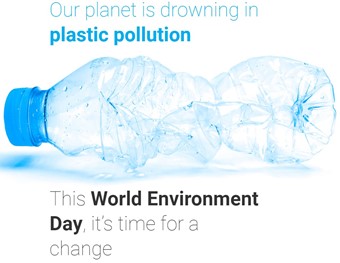
Figure 1
Construction is recognised to contribute more than 15% of unsorted waste, much of this currently ends up in local landfill.
How can Australia create a circular economy for recycling Plastics?
This evaluation considers the Sunshine Coast, Queensland, though can equally apply to any regional or urban area.
A mission led innovation initiative, Prime Minister Scott Morrison has a mission, aim and deadline, for a new commercial model for global recycling expressed to the UN that urges more action to clean up the world’s oceans, with a 70% plastic recycling goal for 2025.
Morrison S., Prime Minister of Australia. (2019).
If it takes 3 to 5 years to achieve environmental and building approvals for a hydrocarbon processing plant … there is no time to waste if Mr Morrison’s aim of recycling 70% of plastic by 2025 is to be achieved. This study indicates the scale of investment required for just one regional area. With one regional area required to invest circa $185 million for a 120,000 tonne facility … Australia would need to invest more than $AUD 10 billion to be able to recycle 70% of Plastic Waste by 2025. This would produce thousands of tonnes of diesel equivalent fuel and LPG gas, and reduce our balance of payments for importing fuel by a considerable margin. Plastic waste to hydrogen fuel is a process which has been successfully piloted and may also be part of the solution.
A presentation for an innovation initiative and business case for integrated plastic waste recycling facilities, which will create a circular economy for waste plastic, this proposal contributes to UN Sustainability Development Goals 12 and 14, a circular economy and cleaning up our waterways and oceans.
“Plastic isn’t the problem. It’s what we do with it,” Head of UN Environment, Erik Solheim. Let us investigate a quantification of the plastic waste generated in this region.
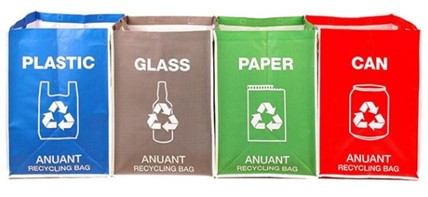
Figure 2:
The unsorted plastic waste should be considered a substantial opportunity and resource rather than a problem. The proposal has the required economies of scale and return to justify the investment. The facility should be built in a waste recycling hub. There is a moral and sustainability imperative for regional Australian areas to, “Own” and process the waste they create. Investment and innovation in the use of Artificial Intelligence and Robotics, scanning and object recognition, high volume plastic and other waste processing should be part of continuing innovation. Combining research in the circular economy should be a core objective of this initiative within the areas of research identified.
The problem: How much plastic does the Sunshine Coast and adjacent regions create every year? The Australian average is 130 kilograms per person, with tourist areas receiving a higher level of waste consumption. Australia produces 3513 million tonnes of plastic waste every year, with less than 5% of this recycled locally. To achieve Mr Morrison’s goal in less than 5 years is a huge undertaking.
With a plastic recovery rate of 70% and around 347 thousand people on the Sunshine Coast and a 30% recovery rate for an additional 246 thousand in the region this is estimated to be a minimum resource creation of 42,645 tonnes of unsorted plastic every year. One tonne of plastic can take up more than 5 cubic meters of space in landfill, which will shortly cost $130 AUD per cubic meter to bury waste. The Sunshine Coast is running out of locations for burying waste. This initiative requires a cultural change for residents, and additional means of collecting 70% and more of plastic waste generated. The initiative may require an additional plastic bin or alternatively a high volume waste sorting facility, to separate waste streams.
The Sunshine Coast population will be over 400,000 by 2035 and the combined regional population is expected to be around 681,000. Plastic waste generated per person is expected to increase 25% by 2035. Quantification of a plastic waste to fuel capacity is of the order of 60,000 to 120,000 tonnes by weight and could be even higher if waste from other regions were to be processed. This proposal explores a maximum processing capacity of 120,000 as at this level there are excellent economies of scale.
Feasibility Model One – an initial investment $AUD 85 Million, with a consistent 42,000 tonne unsorted waste stream for 10 years. An IRR of 20% NPV = $29,638,433 with a terminal value of $AUD 51 million after 10 years, (2035-35). Brake Even Point is circa 4 years and two months.
Designed to meet 75% of Sunshine Coast plastic waste generation in 2025.
Feasibility Model Two – initial investment $AUD 185 Million, with a 42,000 tonne capacity growing to 120,000 tonne unsorted waste stream for 10 years. . An IRR of 21% NPV = $355,320,086 with a terminal value of $AUD 100 million after 10 years, (2035-35). Brake Even Point is 5 years and one month. Designed to meet 100% of future unsorted plastic waste generation by 2035. The aim of the Australian government and UN.
Both models assume a circa 4 year lead time to procure the site, design and engineer the project, meet environmental requirements and get all required approvals including for a petrochemical facility and all risk assessments, completion and initial commissioning by June 30th 2025.
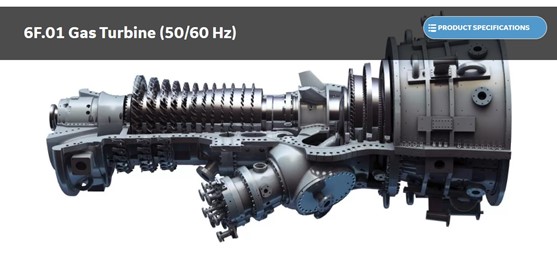
Figure 3:
Power Source: Feasibility model for combined cycle LP Gas turbine evaluated for initial investment of $AUD 82.7 million producing 50,850 MWh/yr revenue stream estimated at $AUD 6.6 million. This model does not consider zero LPG fuel cost, produced by the pyrolytic process. Current Qld Average Spot price circa $73 per MW/h requires minimum peak spot price of circa $220 for 4 hrs per day to be feasible.
There may be an opportunity for grants and support from the Clean Energy Finance Corp (CEFC) which is a source of funding, providing grants and guarantees to assist companies which provide environmental benefits such as lower emissions.
Energy Jargon Explained:
An average Australian house consumes electricity amounting to 18 KiloWatt(KW) per day or 6570 KW per hour.7 MWh/yr
A watt-hour (Wh) is a unit of energy; it’s a way to measure the amount of work performed or generated. A kilowatt-hour (kWh) is 1,000 Wh. see: Canstar Blue . (2020). The number of households which the turbine described would generate electricity for is circa 7740 households.
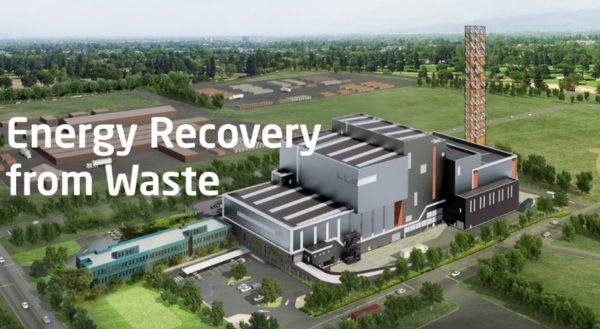
Figure 4:
What is required for an integrated waste recycling facility. This business case could possibly be duplicated in other regional areas which have to deal with large volumes of plastic waste.
With plastic waste weighing as little as 14% of water, or 7 cubic meters of volume in landfill, the Sunshine Coast region are fast running out of landfill sites, an additional incentive to enjoin the circular economy and step up all efforts to recycle all waste. A co-operative Waste Recycling hub supplied with a plastic waste streams from regional municipal waste under a BOOT build own operate and transfer procurement methodology, with the participating council’s retaining a 40% share in the investment. This Business proposal is based on recent plastic waste to fuel and energy projects in the UK, Europe and Australia where some commercial information is available. Case Study 3: Avertas Energy is Australia’s first large-scale energy from waste facility under construction in Kwinana, south of Perth. Once operational in 2021, the facility will recover resources and energy from municipal and commercial waste and has the potential to reduce CO2 emissions by at least 200,000 tonnes per annum. Ramboll has provided consultancy services to this project, which reached Financial Close in 2018. Ramboll was instrumental in structuring the project, as well as negotiating the contract with Acciona Construction for designing and building the plant and negotiating the contract with Veolia Australia for operating the facility. Design, procurement, manufacturing, construction and commissioning of the plant is expected to last 36 months, with the plant anticipated to be in commercial operation by October 2021.
During the manufacturing and construction phase, Ramboll has acted as the Owners Engineer, responsible for undertaking design review and inspection. Ramboll will also oversee the performance testing and commissioning of the facility and transfer to commercial operations. A BOOT build own operate procurement methodology which this business proposal is based on. Production of the synthetic diesel emits 90 percent less CO2 compared to traditional fuel production. Seen in a life cycle perspective, this corresponds to a reduction in CO2 emissions by more than 50,000 tonnes of CO2 per year – years compared to emissions from the production of traditional fossil fuels.
https://ramboll.com/services-and-sectors/energy/waste-to-energy
Case Study Two:
The UK Power House Energy Group have provided a business case for a Distributed Modular Generation waste processing plant. Enabling low cost processing of waste plastics for power, heat and hydrogen production streams. A scalable modular design for recycling mixed, unsorted and contaminated plastics with several revenue streams. A 11,900 tonne per annum plastic waste processing plant operating 340 days per year, producing 3.4 mega watts energy per annum, two tonnes of hydrogen per day of operation, and a heat source for air conditioning or industrial processes at 2.2 mega watts energy per annum, requiring an initial CAPEX investment of 80 million Australian dollars, and operating costs of 12 million dollars, employing 50 people directly. Return on investment as a limited company at circa 20%.
https://www.powerhouseenergy.net/
Case Study Three:
ReNew ELP is building the first commercial scale Cat-HTR plant at the Wilton international site in Teesside, UK to recycle end-of-life plastics. The plant will initially recycle 20,000 tonnes of end-of-life plastic per annum but ReNew ELP has planning consent for a further three units, with a potential total processing capacity of 80,000 tonnes per annum. With over $75million AUD invested into the development and its testing at the pilot plant in New South Wales, Australia by Mura Technology Limited, and Licella, who own a pilot plant in Somersby NSW. the technology has been extensively trialled and upscaled over a ten year period. ReNew ELP are working to commercialise the technology alongside Cat-HTR™ license holders Mura Technology Limited. Founder of ReNew ELP and low carbon investment specialist Dr Steve Mahon said: “We believe this technology can revolutionise the recycling of end-of-life plastics in the UK, and make a big dent in the amount of plastic that is currently going to landfill or ending up in our oceans. Every year around 8 million tonnes of plastic end up in the oceans. https://renewelp.co.uk/
A feasibility study and business proposal for a regional plastic waste processing plant. A competitive bid process for a BOOT, build, own, operate and transfer of this facility and a circular economy recycling hub.
Plastic Waste recycling levels are too low, how can we improve these at the local level? A cultural change is required among Australian consumers and citizens. Australians use 17 billion bottles and cans annually and recycling rates are very low. If we benchmark Germany which currently has around 36% recycling of plastics, they have introduced a whole of government program and have education programs to improve recycling habits.
The quantification of the investment required to recycle waste plastic in a regional area at 70% gives any reviewer some analysis of the investment needed to achieve this goal by our Prime Minister. Mr Scott Morrison.
One may infer a similar investment is needed for recycling each of carboard, metals, glass, organic waste, concrete. Of these cardboard and metals recovery are at the most advanced stage of maturity.
Encouraging investment in recycling by the ARENA the Australian Renewable Energy Agency may be required to provide incentives for councils to undertake integrated renewable waste management.
An integrated recycling hub should include electrical generation from waste streams and or the LPG gas which is produced. Some plastic waste recycling produces hydrogen gas in commercial quantities, this could be integrated with Australia and Queensland’s hydrogen fuel distribution systems.
This feasibility study for directed innovation, indicates an investment of an at scale plastic waste facility would provide an exceptional return on investment, this is economic sense and plastic waste should be a highly valued waste stream. A waste plastic to fuel and energy facility within a recycling hub is duplicable for all regional areas, across Queensland and Australia.
This investment in a plastic recycling facility and recycling hub is a. “No brainer,” as it converts unsorted plastic waste into an continuous income stream. In this model the feasibility study would contribute circa 22 million dollars per year into the local economy, while positively impacting the environment and contributing to a reduced carbon future.
One area which the income can contribute is to research and development into further recycling and circular economy initiatives. A higher value for some PPE and PE plastics is for chipping, sorting and reprocessing. Such as the Violea high volume processor in France and Germany.
A similar facility could further increase the income streams from clean plastic waste in a continuous improvement methodology. Artificial intelligence, automation and the 4th industrial revolution may add value to this process and a portion of all incomes should be provided to fund further and local research activities.
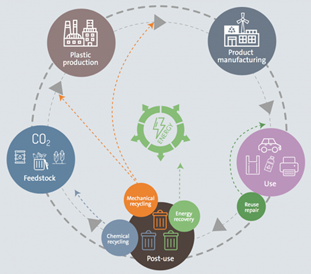
Figure 5:
Recycling Plastic to fuel would reduce our diesel fuel imports by around 9%, produce thousands of tonnes of LPG gas contribute to industrial capacity building and employ thousands of workers in high value added employment.
we understand it takes a long lead time to create plastic waste to fuel facilities or other type of plastic recycling……………Australians should expect a level of investment of $AUD billions in infrastructure to achieve this important goal:
By Grant Spork
Grants has worked both domestically and abroad over the past 20 years collecting a number architectural experiences through a wide range of projects ranging from stadium design to hotels design and refurbishment. His strong passion for all things architecture, combined with his desire to design a more sustainable landscape is represented in each of his guest columns.
References:
Agile Process Chemicals. (2021). Manufacturers and Supplier of Pyrolysis Plant and MSW plant. Retrieved 14 February, 2021, from https://www.pyrocratsystems.com/plastic-waste-management.html
Allan, P. (2019). Australian Government Department of the Environment and Energy. Sustainable Resource Use Recycling Market Situation Summary Review, 1(1), 8-24. Retrieved 13 January, 2021, from http://www.environment.gov.au/protection/waste/publications/recycling-market-review-paper
Alterra energy. (2021). Https://alterraenergycom/technology/. Retrieved 14 February, 2021, from https://alterraenergy.com/technology/
Australian Broadcasting Commission., ABC. (2019). Australia is going to stop shipping its plastics and other recyclable waste overseas. Retrieved 13 January, 2021, from https://www.abc.net.au/triplej/programs/hack/australia-is-going-to-stop-shipping-its-recycling-overseas/11400496
Australian Bureau of Statistics, A.B.S. (2020). Waste Account, Australia, Experimental Estimates Waste generation, management and economic response by industry and household in alignment with System of Environmental-Economic Accounts (SEEA). Retrieved 15 February, 2021, from https://www.abs.gov.au/statistics/environment/environmental-management/waste-account-australia-experimental-estimates/latest-release#data-download
Australian Council of Recycling, A.C.O.R. (2021). Australian Council of Recycling . Retrieved 13 January, 2021, from http://www.acor.org.au/about.html
Australian Department of Environment and Energy. (2018). A National Report 2016–17 Australian Plastics Recycling Survey. 2016–17 Australian Plastics Recycling Survey, 1(1), 1-54. Retrieved 13 January, 2021, from https://www.environment.gov.au/protection/waste/publications/australian-plastics-recycling-survey-report#:~:text=In%202016%E2%80%9317%20the%20national,cent)%20was%20exported%20for%20reprocessing.&text=In%202016%2D17%20Australians%20used,billion%20single%2Duse%20plastic%
Australian Government Department of Agriculture, Water and the Environment. (2019). National Waste Policy Action Plan 2019. Retrieved 14 February, 2021, from https://www.environment.gov.au/protection/waste/publications/national-waste-policy-action-plan
Australian Government Department of Industry, Science, Energy and Resources. (2021). Australian Energy Market Commission (AEMC). Retrieved 15 February, 2021, from https://www.energy.gov.au/australian-energy-market-commission-aemc
Australian Government Department of Industry, Science, Energy and Resources. (2021). Australian Energy Market Operator (AEMO). Retrieved 15 February, 2021, from https://www.energy.gov.au/australian-energy-market-operator-aemo
Australian Government Department of Industry, Science, Energy and Resources. (2021). Clean Energy Finance Corp (CEFC). Retrieved 15 February, 2021, from https://www.energy.gov.au/related-sites/all
Australian Government Taxation Office. (2021). Excise duty rates for fuel and petroleum products. Retrieved 14 February, 2021, from https://www.ato.gov.au/Business/Excise-on-fuel-and-petroleum-products/Lodging,-paying-and-rates—excisable-fuel/Excise-duty-rates-for-fuel-and-petroleum-products/
Australian Packaging Covenant Organisation, A.P.C.O. (2018). Australian Packaging Covenant . Strategic Plan 2017-2022, 1(1), 1-16. Retrieved 13 January, 2021, from https://www.environment.gov.au/protection/waste/publications/australian-packaging-covenant-strategic-plan-2017-2022
Australian Renewable Energy Agency (ARENA). (2019, 24th December). Second energy from waste plant to reduce waste going to landfill. [Weblog]. Retrieved 14 February 2021, from https://arena.gov.au/news/second-energy-from-waste-plant-to-reduce-waste-going-to-landfill/
Avertas Energy . (2021). Energy Recovery from Waste. Retrieved 5 February, 2021, from https://avertas.com.au/
Canstar Blue . (2020). Energy Cost Appraisal and Average Electricity Costs per kWh. Retrieved 15 February, 2021, from https://www.canstarblue.com.au/electricity/electricity-costs-kwh/
Chapman, W. (2020). Cleanup: Plastic Waste & Recycling in Australia. Retrieved 14 February, 2021, from https://www.cleanup.org.au/plastic-waste?gclid=Cj0KCQiA3Y-ABhCnARIsAKYDH7vrwY0aM1VAhH1VbGqv3IIX19nmI-aXkPAbztjQMuxg-thBmnU3aREaAl6-EALw_wcB
Chemistry Australia. (2012). PACIA National Plastics Recycling Survey. Retrieved 13 January, 2021, from https://chemistryaustralia.org.au/reports/plasticsrecyclingsurvey
Collins, L. (2020). Recharge: Turning plastic waste into hydrogen: first commercial plant moves step closer. Retrieved 14 February, 2021, from https://www.rechargenews.com/transition/turning-plastic-waste-into-hydrogen-first-commercial-plant-moves-step-closer/2-1-733678
Crowe, D. (2019, 25th September). Scott Morrison to call for global plastic policy at UN. [Weblog]. Retrieved 13 January 2021, from https://www.smh.com.au/politics/federal/scott-morrison-to-call-for-global-plastic-policy-at-un-20190925-p52uuq.html
D’ambrieres, W. (2019). Reinventing Plastics, Plastics recycling worldwide and desirable changes. Field Actions Science Reports, 1(19), 12-21. Retrieved 20 January, 2021, from https://journals.openedition.org/factsreports/5102
Erdogan, S. (2019). Recycling of Waste Plastics into Pyrolytic Fuels and Their Use in IC Engines. IntechOpen, 1(Published April 22nd), 1-9. Retrieved 14 February, 2021, from https://www.intechopen.com/books/sustainable-mobility/recycling-of-waste-plastics-into-pyrolytic-fuels-and-their-use-in-ic-engines
Erema plastic recycling machines. (2021). Outstanding Quality Values Exceed Expectations. Retrieved 5 February, 2021, from https://www.erema.com/en/erema_news/IDobj=2935
Fukushima, M & Et al. (2009). Toward maximizing the recycling rate in a Sapporo waste plastics liquefaction plant. Journal of Material Cycles and Waste Management, 11(1), 11-18. Retrieved 14 February, 2021, from https://www.researchgate.net/publication/226931747_Toward_maximizing_the_recycling_rate_in_a_Sapporo_waste_plastics_liquefaction_plant
Gao, W, Hundertmark, T, et al. (2020). Plastics recycling: Using an economic-feasibility lens to select the next moves. McKinsey & Company, 1(1), 1-2. Retrieved 14 February, 2021, from https://www.mckinsey.com/industries/chemicals/our-insights/plastics-recycling-using-an-economic-feasibility-lens-to-select-the-next-moves
General electric power. (2021). Gas Turbines (50/50 Hz). Retrieved 5 February, 2021, from https://www.ge.com/power/gas/gas-turbines/6f-01
German environmental innovation program and MEILO. (2018). Veolia case study MEILO Gesellschaft zur Ruckgewinnung sortierter Werkstoffe mbH Gersheim . Retrieved 20 January, 2021, from https://www.youtube.com/watch?v=I_fUpP-hq3A
Harrington, J. (2021). Powerhouse Energy raises funds as it races to get first hydrogen plant on line. Retrieved 14 February, 2021, from https://www.proactiveinvestors.co.uk/companies/news/938429/powerhouse-energy-raises-funds-as-it-races-to-get-first-hydrogen-plant-on-line-938429.html
Hundertmark et al.. (2019). Accelerating Plastic recovery in the United States. Mckinsey & Company, 1(1), 1-5. Retrieved 14 February, 2021, from https://www.mckinsey.com/industries/chemicals/our-insights/accelerating-plastic-recovery-in-the-united-states
Kleanindustries. (2020). SPR Japan: World’s Largest Waste-plastics-to-oil Recovery Plant (CHP Facility). Retrieved 5 February, 2021, from https://kleanindustries.com/waste-challenges-innovations/plastic-pyrolysis-recycling/spr-japan/
Macarthur, D. (2020). Perspective on “breaking the plastic wave strategy” Study, The circular economy solution to plastic pollution. Retrieved 21 January, 2021, from https://www.ellenmacarthurfoundation.org/news/new-study-confirms-need-for-urgent-transition-to-a-circular-economy-for-plastic
Mastellone, M. (2019). A feasibility assessment of an integrated plastic waste system adopting mechanical and thermochemical conversion processes. Resources, Conservation & Recycling: X, Volume 4, 100017, 1-11. Retrieved 14 February, 2021, from https://doi.org/10.1016/j.rcrx.2019.100017
Mathys A, Semal P, Brecko J, Van den Spiegel D (2019) Improving 3D photogrammetry, models through spectral imaging: Tooth enamel as a case study. PLoS ONE 14(8): e0220949. https://doi.org/10.1371/journal.pone.0220949
McKinsey and Company. (2020). Plastics recycling: Using an economic-feasibility lens to select the next moves. Retrieved 5 February, 2021, from https://www.mckinsey.com/industries/chemicals/our-insights/plastics-recycling-using-an-economic-feasibility-lens-to-select-the-next-moves
McKinsey and Company. (2020). The Plastics Recovery and Reuse model helps identify the most effective moves to boost plastics recycling, using analysis of fully integrated economics across the value chain. Retrieved 5 February, 2021, from https://www.mckinsey.com/industries/chemicals/our-insights/plastics-recycling-using-an-economic-feasibility-lens-to-select-the-next-moves
Ministry of Foreign Affairs of Denmark. (2020, 17th September). Converting Plastic waste to synthetic fuels Quantafuel is now operating at industrial scale. [Weblog]. Retrieved 14 February 2021, from https://investindk.com/insights/converting-plastic-waste-to-synthetic-fuels-quantafuel-is-now-operating-at-industrial-scale
Morrison S., Prime Minister of Australia. (2019). National Statement to the United Nations General Assembly. Retrieved 15 February, 2021, from https://www.pm.gov.au/media/national-statement-united-nations-general-assembly
OECD. (2018). Improving Markets for Recycled Plastics: Trends, prospects and policy responses. Retrieved 20 January, 2021, from http://doi.org/10.1787/9789264301016-en
O’Farrell, K. (2020). 2018–19 Australian Plastics Recycling Survey. National Report for Australian Government Department of Agriculture, Water and the Environment, 1(1), 1-53. Retrieved 20 January, 2021, from https://www.environment.gov.au/protection/waste/publications/australian-plastics-recycling-survey-report-2018-19
Ozkan, K & Et al. (2015). A new classification scheme of plastic wastes based upon recycling labels, Waste Management,. Waste Management, 35(1), 29-35. Retrieved 14 February, 2021, from https://www.sciencedirect.com/science/article/abs/pii/S0956053X14004528
Panda, A. (2018). Thermo-catalytic degradation of different plastics to drop in liquid fuel using calcium bentonite catalyst . International Journal of Industrial Chemistry , 9(1), 167-176. Retrieved 14 February, 2021, from https:// doi.org/10.1007/s40090-018-0147-2
Parliament of the Commonwealth of Australia. (2020). From Rubbish to Resources: Building a Circular Economy. House of Representatives Standing Committee on Industry, Innovation, Science and Resources, 1(1), 217
Queensland Government. (2020, 12 February). Household Waste Recovered or Recycled. [Weblog]. Retrieved 14 February 2021, from https://www.stateoftheenvironment.des.qld.gov.au/pollution/waste/household-waste-recovered-or-recycled
Queensland Treasury Corporation. (2018). Economic opportunities for the Queensland waste industry: final report. Department of Environment and Science, 1(1), 16. Retrieved 20 January, 2021, from https://www.google.com/search?q=Economic+opportunities+for+the+Queensland+waste+industry%3A+final+report&oq=Economic+opportunities+for+the+Queensland+waste+industry
Ramboll Group. (2021). Bright Ideas Sustainable Change Establishing Australia’s first large scale energy from waste project . Retrieved 14 February, 2021, from https://ramboll.com/services-and-sectors/energy/waste-to-energy
Ramboll group. (2021). Establishing Australia’s First Large Energy from Waste project. Retrieved 5 February, 2021, from https://ramboll.com/services-and-sectors/energy/waste-to-energy
Renew ELP. (2021). A new solution for plastic waste recycling. Retrieved 14 February, 2021, from https://renewelp.co.uk/brochure/
Sahu, J & et al.. (2013). Plastic to produce fuel oil with reference to Malaysia and simulation using ASPEN Plus. AIChE The Global home of Engineers, 33(1), 298-307. Retrieved 14 February, 2021, from https://aiche.onlinelibrary.wiley.com/doi/abs/10.1002/ep.11748
Splainex ecosystems ltd. (2021). Pyrolysis Eco Technology for Material and Energy Recovery. Retrieved 14 February, 2021, from https://www.pyrolysis.biz/index.html
Storm, K. (2020). Chapter 6 – Combined cycle power plant (1×1) labor estimate. Industrial Construction Estimating Manual, Gulf Professional Publishing, 2020, 95-159. Retrieved 14 February, 2021, from https://doi.org/10.1016/B978-0-12-823362-7.00006-5
Sunshine Coast Council, QLD Australia. (2015). Waste Strategy 2015-2025. Report into Waste Recycling at Sunshine Coast Regional Council, 1(1), 1-36. Retrieved 21 January, 2021, from https://www.sunshinecoast.qld.gov.au/Council/Planning-and-Projects/Council-Strategies/Sunshine-Coast-Waste-Strategy
UN beat plastic pollution environment day. (2018). This Environment Day. (2018, Tuesday, 5 June). [Weblog]. Retrieved 20 January 2021, from https://www.unenvironment.org/interactive/beat-plastic-pollution/
UN environment programme. (2020). Goal 12: Sustainable consumption and production. Retrieved 14 February, 2021, from https://www.unenvironment.org/explore-topics/sustainable-development-goals/why-do-sustainable-development-goals-matter/goal-12
UN environment programme. (2019). Plastic Recycling: An underperforming sector ripe for a remake. Retrieved 14 February, 2021, from https://www.unenvironment.org/news-and-stories/story/plastic-recycling-underperforming-sector-ripe-remake
Veolia . (2021). Veolia Resourcing the world “Bottle to Bottle”. Retrieved 14 February, 2021, from https://www.veolia.com/en/newsroom/thematic-reports/veolia-committed-climate/our-climate-solutions/recycling-plastic-circular-economy
Waste management review. (2021). RMF agreement to deliver $174M boost to WA recycling industry. Retrieved 14 February, 2021, from https://wastemanagementreview.com.au/rmf-agreement-to-deliver-174m-boost-to-wa-recycling-industry/
Figure References:
Figure 1:
UN beat plastic pollution environment day. (2018). This Environment Day. (2018, Tuesday, 5 June). [Weblog]. Retrieved 20 January 2021, from https://www.unenvironment.org/interactive/beat-plastic-pollution/
Figure 2:
Wish online shopping. (2021). German Compliant Separate Recycling Waste Bin Bags. Retrieved 5 February, 2021, from https://www.wish.com/product/5f0c282bc9bfe2025ab0b985?hide_login_modal=true&from_ad=goog_shopping&_display_country_code=AU&_force_currency_code=AUD&pid=googleadwords_int&c=%7BcampaignId%7D&ad_cid=5f0c282bc9bfe2025ab0b985&ad_cc=AU&ad_curr=AUD&ad_price=36.00&campaign_id=8708109024&retargeting=true&exclude_install=true&gclid=CjwKCAiA9bmABhBbEiwASb35Vz8WSC9IC-nbvys9KtPv7h3s8MbOZoQHONj6cISv3qSXFMD53gqzVBoCMLYQAvD_BwE&share=web
Figure 3:
General electric power. (2021). Gas Turbines (50/50 Hz). Retrieved 5 February, 2021, from https://www.ge.com/power/gas/gas-turbines/6f-01
Figure 4:
Avertas energy . (2021). Energy Recovery from Waste. Retrieved 5 February, 2021, from https://avertas.com.au/
Figure 5:
D’ambrieres, W. (2019). Reinventing Plastics, Plastics recycling worldwide and desirable changes. Field Actions Science Reports, 1(19), 12-21. Retrieved 20 January, 2021, from https://journals.openedition.org/factsreports/5102
List of tables:
Table 1:
Break Even Point Study for a 42,000 tonne per annum unsorted plastic waste to fuel pyrolytic plant. IRR = 20% NPV = $29,638,433 Payback period circa 4 years and two months
Table 2:
Break Even Point Study for a 120,000 tonne per annum unsorted plastic waste (Initial Resource 42,000 tonnes) to fuel pyrolytic plant. IRR = 21% NPV = $355,320,086 circa 5 years one month payback period.
Table 3:
Comparison of three capacities for a pyrolytic unsorted plastic waste to fuel plant with CAPEX / OPEX calculations.
Table 4:
Feasibility Comparison Study for a combined cycle LPG fuel variable speed & output turbine generator
Table 5:
Study of unsorted plastic waste generation on the Sunshine Coast with population and waste criteria including the adjacent Region / estimates for 2025 for a 42,000 tonne capacity facility. 2025 is date for plant commissioning.
Table 6:
Feasibility Study Pyrolytic Conversion of unsorted plastic waste to diesel equivalent fuel and LPG gas a quantification of 42,000 tonne capacity resource 2025
Table 7:
Feasibility Study of Sunshine Coast and Regional Areas capacity requirements for pyrolytic chambers and plant .
Table 8:
Feasibility Study of Sunshine Coast and Regional Areas Plastic Waste Generation – 2035 projection
Table 9:
Feasibility Study of Size and capacity of pyrolytic plant with a 120,000 tonne capacity 2035 projection
Table 10: Feasibility Study of Size and capacity of pyrolytic plant with a 120,000 tonne capacity 2035 projection
Table 11:
Feasibility Study fuel and LPG conversion from pyrolytic plant with a 120,000 tonne capacity 2035 projection
Table 12:
Feasibility Study Size of plant and number of pyrolytic chambers for a 120,000 tonne capacity

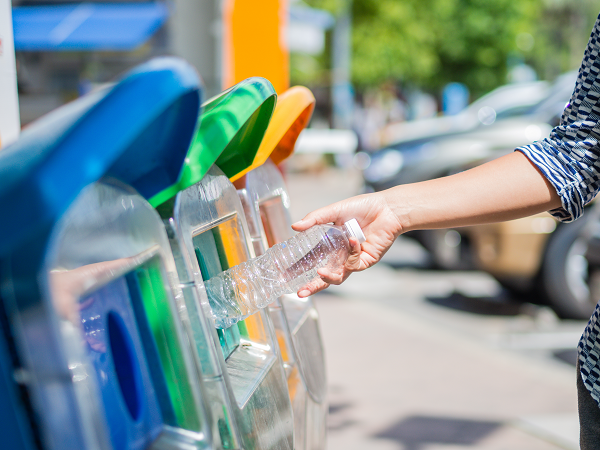
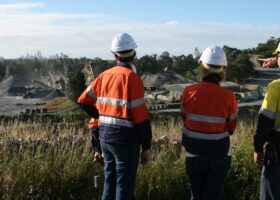









Join the conversion
Don't:
Do: